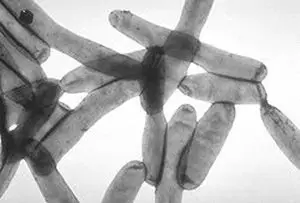In recent days, outbreaks of Legionella have appeared at the Diamante Beach hotel in Calpe (Alicante) and at a seafood restaurant in Móstoles (Madrid). As a result, the topic has begun to be discussed in the media, sometimes generating more confusion than anything else. So I am going to dedicate this post to clarifying certain things about Legionella.
What is legionella?
Legionella is an infection caused by a bacterium, with characteristics similar to pneumonia. It was discovered in 1956, from a series of fatal cases caused by an unknown bacterium that did not respond to antibiotics such as penicillin. Subsequently, in 1976, the bacterium was identified through clinical trials mainly conducted on American ex-servicemen. In honor of these legionnaires, the disease was called ‘Legionella’.
It should not be confused with Salmonella, which is a disease transmitted through food, especially in eggs, milk, and the famous mayonnaise from bars.
How is it transmitted?
The Legionella bacteria grows in stagnant water and under suitable temperature conditions (between 20 to 60º). Therefore, it is especially critical in buildings with heated water systems. For example, air conditioning systems, cooling towers, domestic hot water systems, jacuzzis or spas, humidifiers, etc. It is not as important in swimming pools because the chlorination system eliminates the bacteria.
Legionella is not transmitted from person to person. The only way to contract the disease is to breathe in or ingest contaminated water droplets.
What are the effects?
The initial symptoms are similar to those of the flu: fever, discomfort, and diarrhea. This causes those affected to believe it is just a simple flu and not seek medical attention, which complicates the disease later on. It affects children little, with the majority of cases occurring in adults over 30 years old. It is also much more common in smokers, with 95% of cases occurring in smokers.
Legionella can be detected through a simple urine test and there are drugs for its treatment. Nevertheless, in some cases, the disease can be fatal, especially if it is complicated by weakened immune systems, asthmatic conditions, or elderly patients.
How to prevent Legionella?
The measures to prevent infection are mostly technical in nature. Water heating installations should be designed and maintained in good condition. There are regulations for Legionella control, such as R.D. 865/2003, of July 4, which establishes the hygienic-sanitary criteria for the prevention and control of legionellosis, which can be expanded by specific regional regulations.
Specifically, it must be ensured that in circuits where chilled water is used, the circuit temperature is below 20ºC. Conversely, in hot water and heating installations, the water accumulation temperature should be above 60ºC.
In those water tanks or circuits where it is necessary to maintain a temperature below 60ºC (such as solar accumulation), measures for periodic disinfection of the installation must be provided, either through chemical products or through thermal shock, the latter being the preferred option in most installations.
Finally, it is recommended to cover food with film in the refrigerators of bars and restaurants to prevent condensation droplets from forming on the surface of the food, which could contain bacteria and pose a contagion risk.
